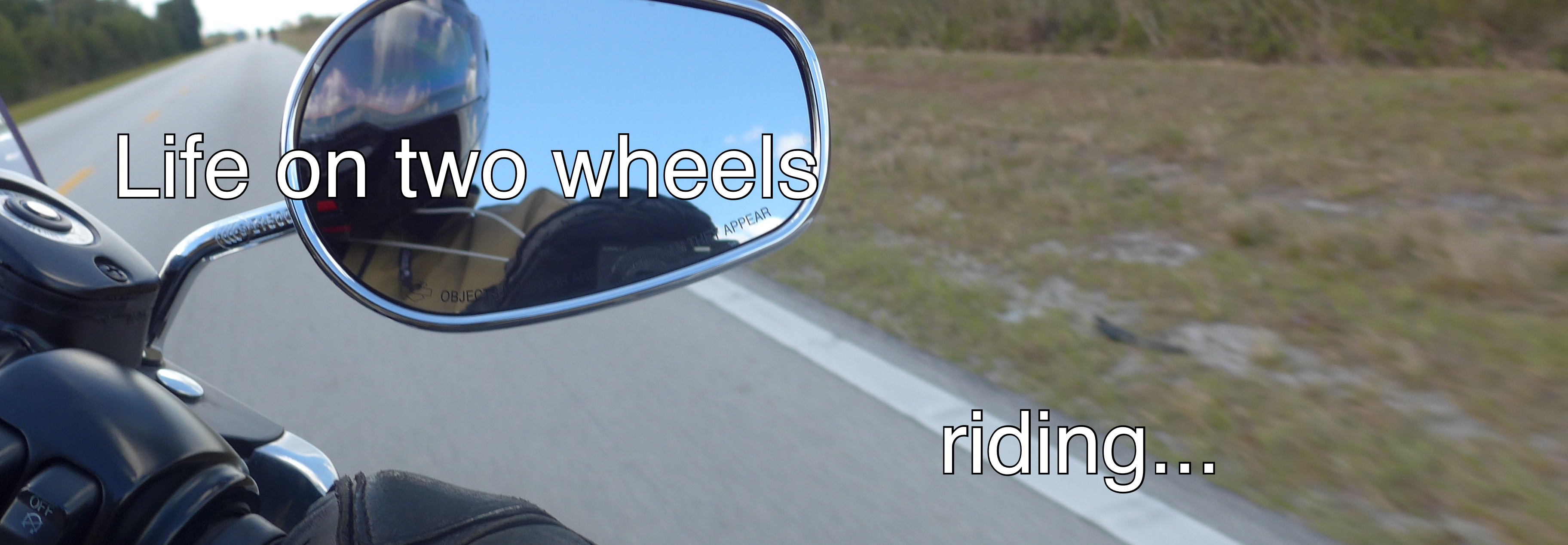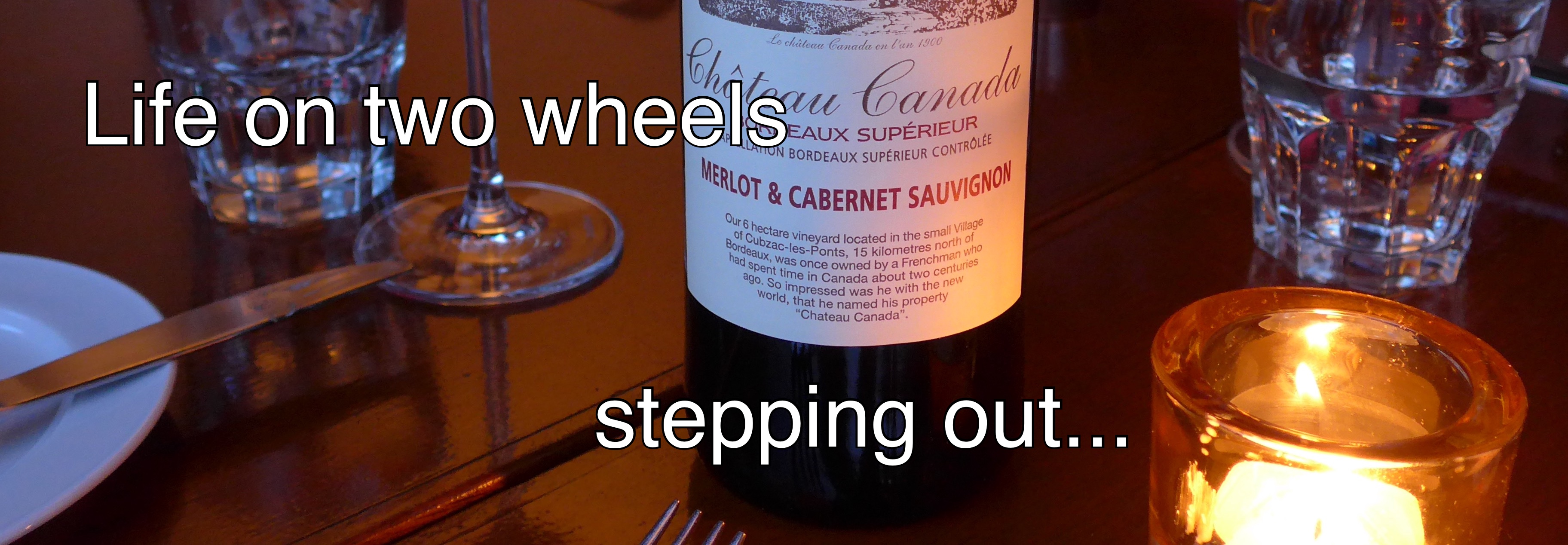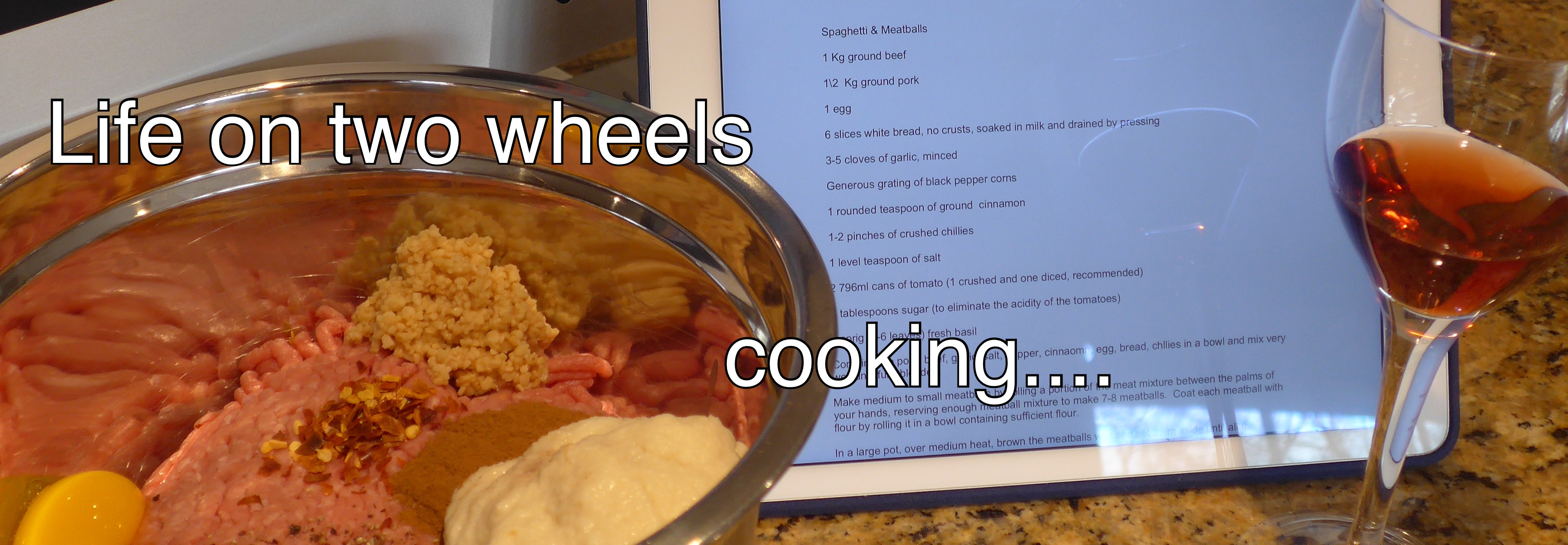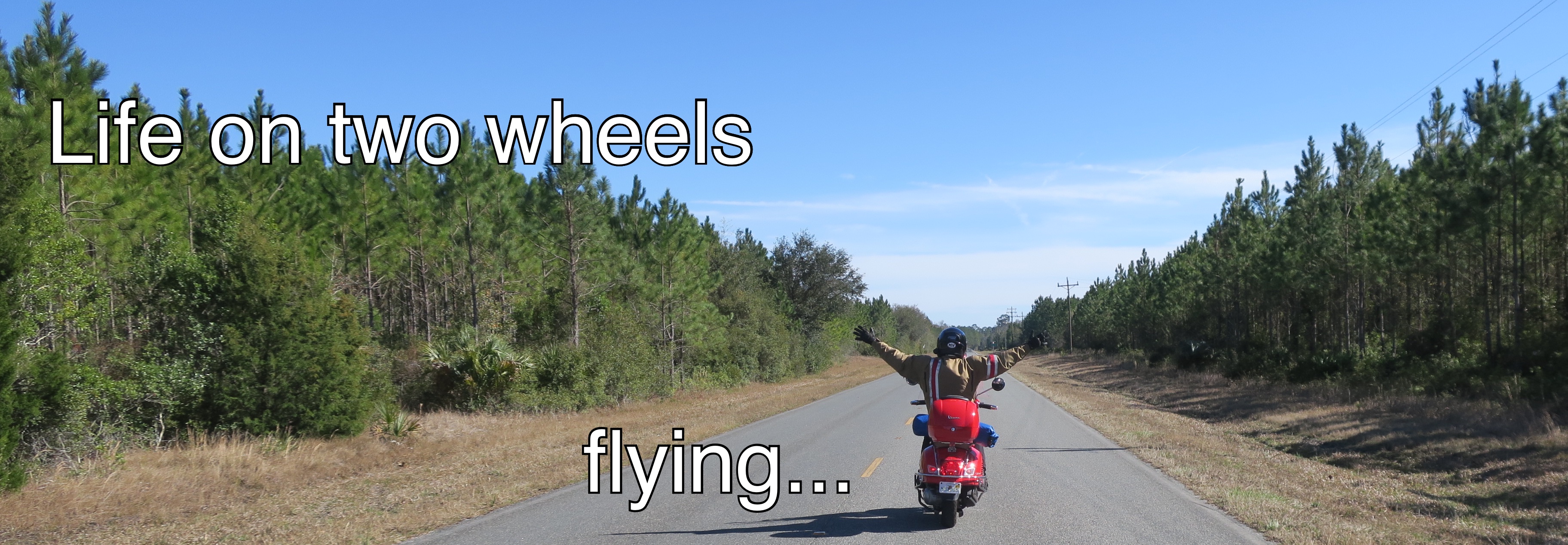Like the over-under toilet paper roll issue. The next time that one rears its head, click here, bone-up on the topic, swig some beer to wet your whistle, then weigh in well-armed.
Back to the kill switch.
Every bike has one. Unless you ride a vintage bike, in which case, maybe not.
I don't think there is a topic that breaks more randomly among riders. Other topics that spawn vigorous debates, like counter-steering versus steering-by-leaning, tend to separate along experience lines, with the pros on the counter-steering side of the debate and the others on, well, the other side.
Not so with kill switch debates. There are expert riders on both sides of this one.
I'll do my best to summarize the arguments on both sides of the issue.
Arguments in favour of ignoring the kill switch:
- Always leave it in the run position, it serves no real purpose except shutting off the motor in an emergency (dropped bike, accident, stuck throttle, etc.);
- It's not designed for more than occasional use, using it two or three times a day will cause it to fail, and strand you with a bike that won't start;
- If you get into the habit of shutting the motor off with the kill switch, you'll forget to turn off the ignition and when you return to your bike you'll have a dead battery;
- If the bike is fuel injected, the kill switch will not turn off the fuel pump, and it is not good to have fuel pressure in the injector(s) with the motor not running; and
- If you use the kill switch and leave the ignition on, the headlight will overheat and melt the lens or headset cover (Vespa specific argument).
- If you make a point of using the kill switch to turn off the motor, in the event of an emergency, you'll already have the muscle memory and will be able to shut the bike off instantly;
- Kill switches may fail like any other switch, but actual failures are more of an urban myth than a real problem. The turn indicator switch gets far more use, does that fail very often?
- The kill switch is just literally handy. You can turn off the bike without taking your hand off the handle bar. It maintains total control over the bike until the engine is off, it's just a safer way to manage the bike;
- If you don't get into the habit of using both the kill switch and the ignition, some devil will flick your kill switch off on a whim, and when you attempt to get going, you'll end up thinking something died and your bike won't start. The kill switch won't be front of mind;
- If you're ever on a rental bike or a loaner, you won't be familiar with the ignition switch location and the distraction of locating the ignition switch while the bike is running is just another safety issue. Kill switches on the other hand are always located within easy reach on the handle bar; and
- The US Motorcycle Safety Foundation course teaches new riders always to use the kill switch.
The compelling reason as far as I am concerned is that if you don't get used to using it you'll eventually forget that it exists and you won't be able to figure out why your bike won't start if by some fluke (or courtesy of a passer-by) the kill switch gets flipped. The secondary arguments that work for me are the safety-related ones.
I got used to doing this with my carbed Vespa LX150. I noticed (and more importantly Susan noticed) that when I came home and parked the new fuel-injected bike, there was sometimes a raw gasoline odor in the garage.
I still use the kill switch for the same reasons, but now I have reversed the shut-off sequence. I turn off the ignition and then turn the kill switch off. It seems to solve the problem. I checked, and at least for a fuel-injected Vespa GTS 300, when you turn on the ignition with the kill switch on (i.e. disabling the motor), the fuel pump does activate. I take that to mean that the fuel remains pressurized when the kill switch stops the engine.
If you care to explore samples of the debate,
- click here for one of the ModernVespa threads,
- click here for one of the ADVrider threads, and
- click here for an interesting debate on Reddit.









20 comments:
Uh, like, no. Never use it to turn off the scooter. I just stop and turn it off.
And I never, ever leave the key in the scooter anyway.
To me, KS is for emergencies or other unexpected conveniences. None of which I can think of right now.
Whatever suits...:=)
Not a user. That's what the ignition switch is for. Consider: there's no kill switch in your car and you manage quite nicely without one.
Guilty. Use it every time I shut the bike off. It is pure muscle memory now. Kill switch - turn off key.
I differ in that I kill it then hit the switch back to run after turning the ignition off so it is always ready to go the next time I turn the ignition on.
My Team Oregon class taught us to use the kill switch back in 2002 so that is what I do. The only time the keys are left in the bike is in the garage and I don't think either of us has ever left the ignition on or forgotten our keys in the bike when out somewhere
Oh this is harmless fun, isn't it?
Quite right, quite right, one more reason not to be a killer.
Brandy it's hard to remain the dispassionate editor / survey guy, when the 'for' argument is so well expressed.
Mostly kill-switch user here, learned it during training, and it kind of stuck.
As for the toilet paper: it is usually over-oriented ;-)
I use the kill-switch all the time on both the BMW and the Ural. On the Ural, the ignition switch is on the left side of the headlight and to reach it (in front of the windshield, you have to let out the clutch and practically get off the bike. I always leave the bikes in first gear when I stop. On the BMW, the ignition switch costs a whole lot more and is difficult to replace. Why wear out the electrical contacts (due to more current running through the switch) than needed. At least the kill switch removes part of the electrical load from the ignition switch. To add another thing, I always turn off my headlight before shutting off the engine.
Sonja, did you read that toilet paper Wikipedia page??
Too funny! On average of the surveys, your (toilet paper) orientation places you in the majority of humans, with 68% of your fellows.
As for kill switch preferences, the jury is still out.
Richard that's an interesting observation on the amount of current affecting the useful life of the switch contacts.
I think I'll add these new observations to the original post to round things out (with attribution of course).
I thought you might be a killer.
Never (almost) use the red rocker, unless I'm in a hurry to stop on a slope and leave the bike in gear. Or, once in awhile I'm anxious to hear someone and with earplugs getting quiet, quickly can be just enough faster.
Funny, I look at a KILL SWITCH as a KILL SWITCH. It is intended to kill the engine in case of an emergency. Most rec relational vehicles have them and some have more than one. For example, my motorcycle has a kill switch on the kick stand as well. I suppose you could (and I do on the occasion) shut off the engine by putting the kick stand down in first or second gear. But is that what its intended use is? On a Seadoo, there is a kill switch attached to you that shuts down the engine if you fall off, but I have yet seen someone jump off their Seadoo to shut down the engine.
With respect to saving the ignition switch, I have yet heard of someone replacing that switch when used under normal circumstances on a reputable bike (not made in China).
Do I use the kill switch? nope. Do I know where it is and could I use in the case of an emergency? Yes. But in an emergency situation, knowing, practicing and actually doing are all different things and therefore we really do not know how we would react in an emergency and I pray that none of us have to find out.
I am of a simple mind; Kill switch for killing the engine/Ignition key for turning the engine off.
Excellent fodder for this strange debate Doug.
That's the one inconvenience of ear plugs. And oddly prescient of you in a segway-ish way, ear plugs figure prominently in the next post.
Peter one of the curses of the Vespa side stand is the lack of an ignition cutoff. I wonder if I could install one.
Count me as another one who always uses the kill switch. I was taught that method in MST class. Primarily for the reasons you listed. If you don't make it an unconscious habit, you won't remember to do it in an emergency.
Same reason why I trained myself to get in my car, lock the doors, and then start it. It is safer to drive with locked doors, especially as a woman. But if I didn't force myself to make it a habit I wouldn't lock my doors until I saw a sketchy looking person and remembered to do it.
Muscle memory is huge when microseconds count.
Another (perhaps more important) safety-related muscle memory trick is always to cover the horn button when you cover the brake. That has allowed me to ward off lane intruders on many many occasions. It allows you to brake and honk simultaneously when microseconds count.
Dave, you don't touch the red switch. You press the green switch. Do you know the skit "fire a torpedo...how do you do that?...press the green switch"?
When I took the riding course they said that if you turn off the ignition, you kill juice into your entire bike and thus you won't have lights (and you may be standing on the side of a road). Though Vespa's ignition leaves the electrons running around even when the engine is turned off. Besides, the name of the switch is like a voodoo thing - you hit it and who knows what may happen - squirrels falling off trees, earthquake shaking the land. No way, man - I use the ignition key only and the butt wipes over the top. Thank you very much.
I never use the kill switch. Always turn Rocket and my other bikes off using the ignition switch only. Now, one time on a group scooter ride to North Carolina, at our first stop, one clown among us switched off my kill switch while I was getting a drink inside a gas station. It caused brief panic for me, but I overcame it when I figured it out. It has been tried since, but I know the game now.
Michael continue as you do. The last thing any of us need is squirrels falling out of trees.
I've heard of clowns hitting their friend's kill switch at red lights. What else are friends for Bill?
Post a Comment